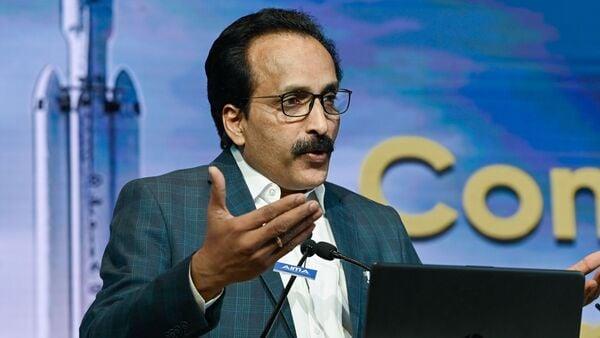
Cabinet's $2.7 Billion Funding For Isro's Chandrayaan-4 To Gaganyaan To Boost Private Firms
The government allocated ₹11,170 crore ($1.3 billion) to Gaganyaan, ₹8,240 crore ($985 million) to Next-Generation Launch Vehicle (NGLV), ₹2,104 crore ($251 million) to Chandrayaan-4 and ₹1,236 crore ($150 million) to Venus Orbiter Mission.
Mint had reported on the space missions being submitted for Cabinet approval on 26 June.
With a target timeline of 36 months, Chandrayaan-4 will be the first of these projects to take off. The mission, which follows India's first successful landing on the lunar surface, will seek to collect samples of rock and soil-and return safely back to earth.
Each of the approved missions will include participation of the private space sector, confirmed Somanath S., Isro chairman and secretary, Department of Space (DoS). This would be one of the biggest fillips that India's nascent space startups have received from the Centre to date.
Also read | India's spacefarers get takeoff tips from the government
The production of the NGLV launch vehicle, which received the second-biggest budget allocation on Wednesday's space approvals, is expected to carry“maximum participation from the Indian industry,” the DoS said in a statement.
It triples the capacity that India currently has in terms of carrying payloads to space with a net capacity of 30 tonnes. The latter has been designated an eight-year development span by Isro. It is crucially expected to carry India's manned space mission, Gaganyaan, to orbit in 2040.
The production of the NGLV launch vehicle, which received the second-biggest budget allocation on Wednesday's space approvals, is expected to carry“maximum participation from the Indian industry,” the DoS said in a statement.
Anil Kumar Bhatt, director-general of space industry body, Indian Space Association (ISpA), said that the upcoming central space projects will“help the private sector work on world-class space missions, with Isro anchoring them”.
According to Chaitanya Giri, space fellow at think-tank Observer Research Foundation (ORF), with the NGLV,“the industry may be invested in the entire material procurement, supply chain management, rocket engineering, testing facilities, manufacturing units, assembly and integration, and launch operations.”
Also read | Centre urges space startup collaborations to build scale, boost revenue
“The approved corpus by the Cabinet may mean that the larger pool gathered by all the private players to raise the entire NGLV-compatible paraphernalia over the entire tech-development cycle could go over ₹20,000 crore, which could include reusable enabling apparatus and infrastructure. This doesn't minimize the role of the government, since the biggest customer is the government, through all of the other approved projects,” he added.
Fresh funds will boost India's Gaganyaan mission, which includes launching India's own space station between 2028 and 2035. Isro eyes 2040 as a target timeline to launch India's space operations.
Mint reported prioritization of the Bharatiya Antariksha Station (BAS) on 29 August, underlining its geopolitical significance of becoming one of only two state-owned space stations in orbit by 2035.
The Venus Orbiter Mission is part of Isro's scientific exploration of the planet.
Speaking with Mint on the sidelines of Isro's National Space Day celebrations, Anil Prabhakar, director of department of space (DoS)-affiliated Physical Research Laboratory, said that one of the key aspects of Chandrayaan-4 will be the lunar soil collection, and its subsequent flight back to earth.
“There is a significant engineering challenge to solve when it comes to being able to launch back from the lunar surface, escape lunar gravity, and come back to earth. Sterilization of the compartment to collect lunar soil will also be a significant challenge that we've to achieve, and this will add upon our achievements of studying the origins of the moon-which we could conduct with Chandrayaan-3 ,” Prabhakar said.
The findings of Isro's previous moon mission were published in peer-reviewed scientific journal, Nature, last month.
And read | India puts space station on priority eyeing geopolitical gains Legal Disclaimer:
MENAFN provides the
information “as is” without warranty of any kind. We do not accept
any responsibility or liability for the accuracy, content, images,
videos, licenses, completeness, legality, or reliability of the information
contained in this article. If you have any complaints or copyright
issues related to this article, kindly contact the provider above.


















Comments
No comment